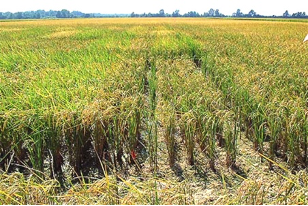
Phosphorus (P) Deficiency

Phosphorus deficiency is widespread in all major rice ecosystems and is the major growth-limiting factor in acid upland soils where soil P-fixation capacity is often large.
Phosphorus deficiency can cause poor tillering, poor root development, late panicle formation and late maturity.
How to identify (symptoms)
Check the field for the following symptoms;
- stunted plants
- reduced tillering
- older leaves are narrow, short, very erect, and has a "dirty" dark green color
Young leaves looks healthy but older leaves turn brown. Depending on rice variety, leaves color turn to red or pink colors because of producing anthocyanin pigment on leaves. Anthocyanin is a water- soluble compound producing red, purple and blue pigments found in plant cells that attract insects and birds.

How to manage
1. Use high quality and high-yielding variety
2. Use rice cultivars that use P efficiently, particularly on acid upland soil.
3. In rice- rice systems, carry out shallow tillage (10 cm) withing 2 weeks after harvest. On acid, low-fertility rainfed lowland and upland soils, add first magnesium, potassium and other micro nutrients before applying phosphorus.
4. Incorporate rice straws in soils to maintain a positive P balance in the long term.
5. Apply optimum doses of nitrogen(N), potassium(K) and micro nutrients.
6. Replenish P removed in crop products by applying phosphorus fertilizer and farmyard manure and other composts.